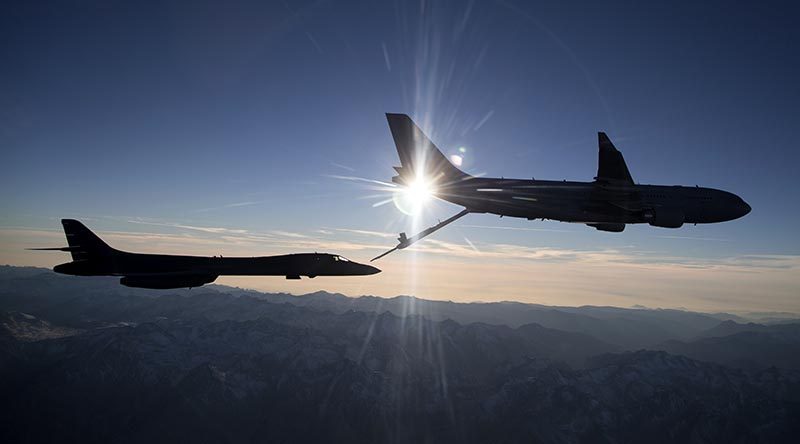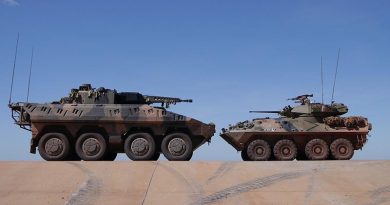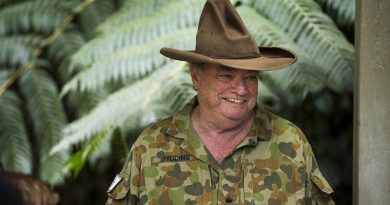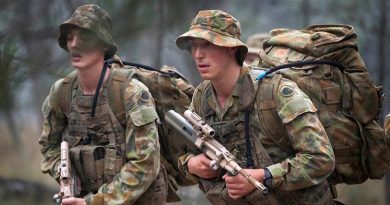RAAF tanker ‘Bones’ up on refuelling missions
Share the post "RAAF tanker ‘Bones’ up on refuelling missions"

In late October and November 2016, the RAAF’s KC-30A Multi-Role Tanker Transport conducted air-to-air refuelling clearance trials with a United States Air Force B-1B Lancer during a rigorous test program at Edwards Air Force Base in California.
CAPTION: Air-to-air refuelling hookup between a RAAF KC-30A and a USAF B-1B Lancer. USAF photo by Christian Turner
The test team, led by the RAAF’s Aircraft Research and Development Unit and the USAF’s 418th Flight Test Squadron, examined all parameters of the air-to-air refuelling procedures between the two aircraft, with a total of 185 dry contacts and 16 wet contacts (where fuel was transferred) being conducted.
The B-1B is a heavy strategic bomber in-service with the US Air Force, and the ability to refuel the USAF B-1B is an important milestone for the RAAF, as the aircraft is often employed by the USAF in the Middle East and the Asia Pacific regions – including ever-increasing visits to Darwin and local bombing ranges.
The B-1B Lancer was first flown in 1974 and entered US Air Force service in 1986, with a total of 100 B-model Lancers built – 62 still flying.
Nicknamed “The Bone,” the B-1B Lancer is a long-range, multi-mission conventional bomber that was originally designed for nuclear capabilities, but switched to an exclusively conventional combat role in the mid 1990s.
The B-1 has been nearly continuously deployed in combat operations over Afghanistan and Iraq since 2001.
It can carry 34 tonnes of bombs.
.
.
.
.
.
.
.
.

.
.
Share the post "RAAF tanker ‘Bones’ up on refuelling missions"






